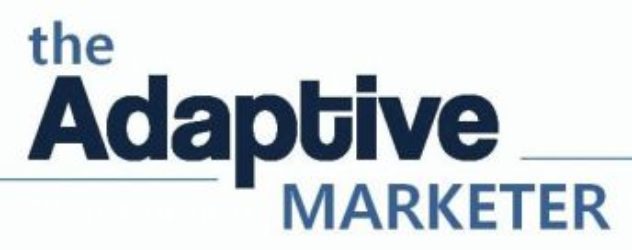I just read this blog post which starts with a very bold statement “SaaS adoption will move beyond the “Tipping Point” in 2009”. . Countless analysts’ reports have prophesized about the explosive growth of applications delivered under a SaaS model for some time now. The reality is that adoption of software via this on-demand model has been quite limited (outside of CRM, thanks to Salesforce.com).
Sometimes it seems like the IT industry is looking for the next big acronym that will revolutionize the way we look at technology. In reality, customers and IT departments are much more cautious than what most vendors and analysts would like them to.
While not exactly the same, there are very few differences between SaaS and the ASP model that was the vogue in the late 90’s. Where is the money? The Forrester slide in the aforementioned blog shows 24% of companies are “interested in SaaS’. There is a difference between being “interested” and signing a check.
First, I think it is important to understand SaaS is a delivery model that can be broken down into multiple components: hosted offering (off premise), monthly billing based on use, small or non-existent upfront cost and quick deployment. This in contrast with the “traditional” software deployment licensed as a perpetual license, deployed on-premise by the IT department and variable deployment times.
Most SaaS offerings are available to purchase online via a credit card with self provisioning. To enable these self-provisioning and instant-on capabilities, SaaS offerings are usually templetized with limited options. Integration with other systems is not as flexible as with a traditional on-premise solution. I say mostly because there is a wide range of vendors with different models. To support many customers from each server, SaaS vendors usually require multi-tenancy.
In my humble opinion, the SaaS model is not nearly as important as the evolution in the market towards managed services. What is the difference? Managed services are also hosted off-premise by a vendor that also provides software deployment, management and maintenance. In other words, a managed services vendor takes the pain from IT hosting and managing a discrete piece of infrastructure. If you look at Salesforce.com in terms of implementation costs and resources it probably looks more like a managed service than a true SaaS model.
Let’s look at email as an ideal candidate to move off on-premise IT. Most It departments see e-mail as a business critical service from It but also as a solution that is pretty standard in terms of the ability for It to add value. Microsoft Exchange Server has a very large and growing market share (70-80%) and is used everywhere from small companies (licensed as part of Microsoft Small Business Server for organizations with 5 users or more) to the largest enterprises.
There are two markets for off-premise Exchange services: Hosted Exchange (SaaS) and Managed Exchange.
Given the advantages of hosted Exchange in terms of cost, availability and security most in the industry (myself included) expected droves of small and medium businesses to go to Hosted Exchange. Microsoft had hundreds of Hosted Exchange partners – from companies like 4smartphone.net to USA.Net to Microsoft’s own Exchange Online offer. Yet, despite effort from Microsoft and all these partners, adoption had been very limited.
Managed Exchange is a different story. Vendors like HP, EDS and AT&T hosts millions of email inboxes for the world’s largest companies but not in a SaaS model. They manage their Exchange servers on their behalf, with a team of certified Microsoft Exchange IT experts in a datacenter. There is no multi-tenancy, each customer is likely to have a cluster of dedicated Exchange servers. There is no online self-procurement: these are multi-million services deals done in person.
What is my point? Analyzing this data, one can come to a couple conclusions:
- The SaaS model is especially attractive for the SMB space.
- Yet it has failed to gain the traction that the industry expected .
- There are very few success stories outside of CRM. I can’t think of many successful and profitable SaaS vendors. Omniture, Salesforce.com, who else? Wordpress?
- The SaaS model still has many challenges ahead:
- Information security perceptions – would you trust all your information to Google Apps and Google Mail? Many CIOs I have talked to would not.
- SaaS software deployment model has its own challenges: it can break things
- Reliability (SLAs) – the best example is the 38 minute Salesforce.com outage this January (do a search on “salesforce outage” results in over 100,000 hits)
- The Managed Services model, on the other hand, is very successful and gaining momentum.
- Many large IT organizations are offloading core low-value IT services like email to managed services vendors.
- In other words, while SaaS is not being adopted as fast as everyone though, Managed Services have reached critical mass and are already a significant business.
Mid 2015 Update
Today I found this old post. How much changes in six years. My first thought was that maybe I should delete the post. Then I thought I should just add this comment to acknowledge my prediction was wrong. SaaS has hit a tipping point and is the future of software – for the most part.
Then I saw the date and read the post and realized maybe I was not so wrong, that many of the challenges have been solved in the past 6 years. The SaaS model itself has matured, and in some cases a hybrid between SaaS and managed services has emerged as the winning combination. The signs that SaaS had hit a tipping point were clear as early as 2010. At the end of that year I joined a SaaS company. But I have to recognize back in 2009 I was wrong in being so skeptical of the speed at which SaaS would mature. Which is OK I guess, ad my track record with predictions has been pretty good so far.


